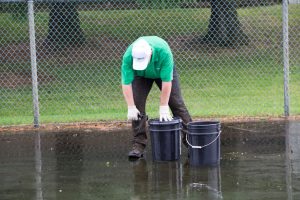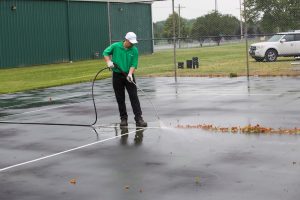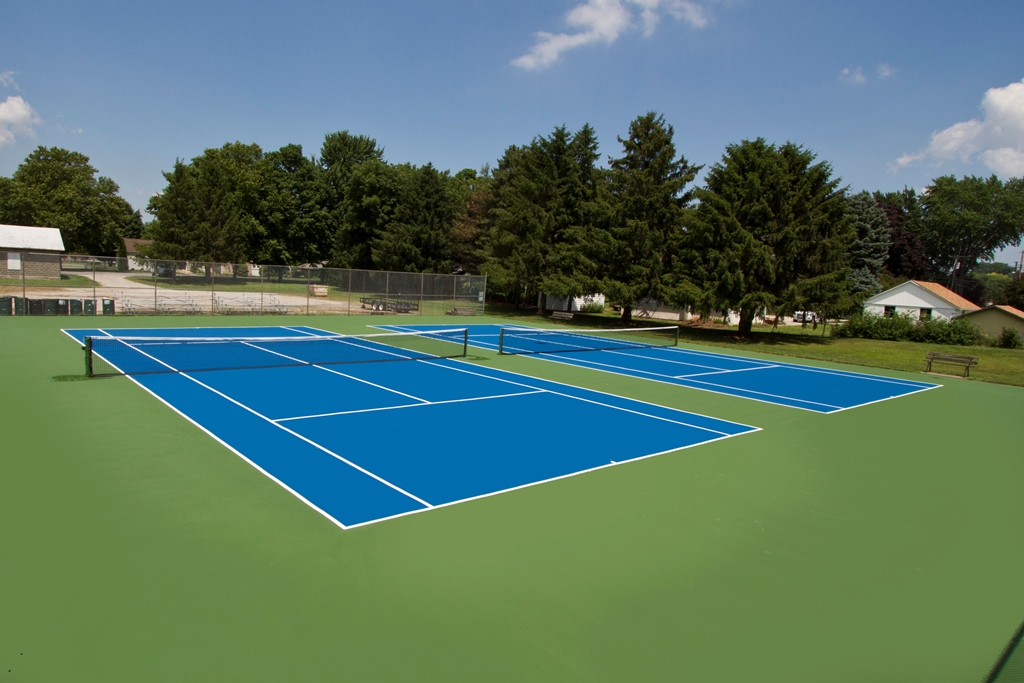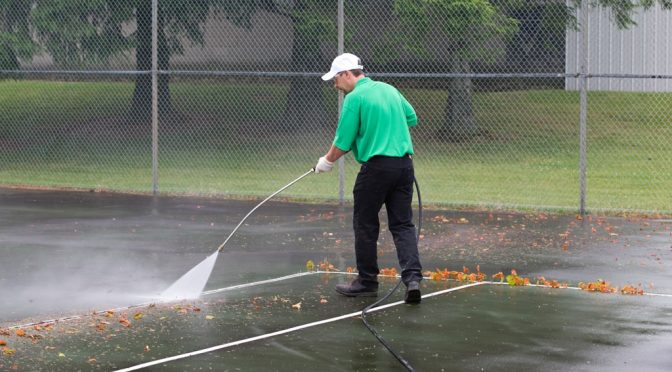Tennis court maintenance is inevitable, but fortunately acrylic hard court surfaces require very little time and effort to maintain. If your tennis court was properly built, per the guidelines of the American Sports Builders Association, the natural slope and weather will help to minimize accumulation of debris and water. We will go over some other important tennis court maintenance items that you may want to consider, so that your court will provide many years of enjoyment.
Cleaning Your Tennis Court Surface
It is a good idea to clean your tennis court surface once each month. Most of the time, a blower and broom will do the trick. This will help to eliminate organic items like leaves, pine needles, and any other debris before it can stain your court surface or create friction under foot and contribute to premature wear of the tennis court surface coatings.

If the court surface is neglected or under heavy cover from trees and shade, mold and mildew can become a problem. A solution of water & bleach can be used to kill the organism that has grabbed onto the court surface. For courts that are not being resurfaced, here is a basic mixture that can be used:
Tennis Court Cleaning Solution:
- 4 parts water
- 1 part household bleach
- Small amount of detergent, if desired (Simple Green or TSP works well)
For ease of mixing, here is an example of the tennis court cleaning solution:
- 10 gallons of bleach in a 55-gallon drum
- 3 oz of detergent (Simple Green)
- Fill drum to the top with water and mix well.
- Spray or pour onto the tennis court surface and use a soft brush scrubber on desired areas.
- Rinse well with clean water
Pressure Washing A Tennis Court
Pressure washing a tennis court is best avoided unless your are planning to have your court resurfaced. The tennis court cleaning solution, soft brush, and moderate pressure to rinse the court usually takes care of dingy surfaces. If you do decide to pressure wash your tennis court, be very careful and keep the PSI low to prevent damage to the color coatings.

Tennis Court Surface Protection
When you visit most schools and parks, many times you will notice signs posted on the fence where you enter the tennis courts. Here are a few common items that are usually listed to prevent damage to court surfaces:
- Use only non-marking tennis shoes on the courts
- No bikes, skateboards, or rolls skates on the playing surface
- No chewing gum, food, or non-water drinks
Drainage & Positive Water Flow
Water can be one of the most damaging enemies of tennis courts. Check from time to time to ensure that perimeter drains are not blocked by vegetation or plugged by other debris. Maintain vegetation or grass around the edge of the court to make sure it is not creating a dam that can inhibit positive flow of water, draining off the tennis court. Protect the surface from any chemicals, weed killers, or fertilizers that may be used around the court.
Tennis Court Maintenance | Repair & Resurfacing
Finally, make sure to have your tennis court maintained by a professional tennis court contractor, as needed. Tennis court crack repair, low spot removal, and tennis court resurfacing are important to the longevity of your asphalt or concrete base.


